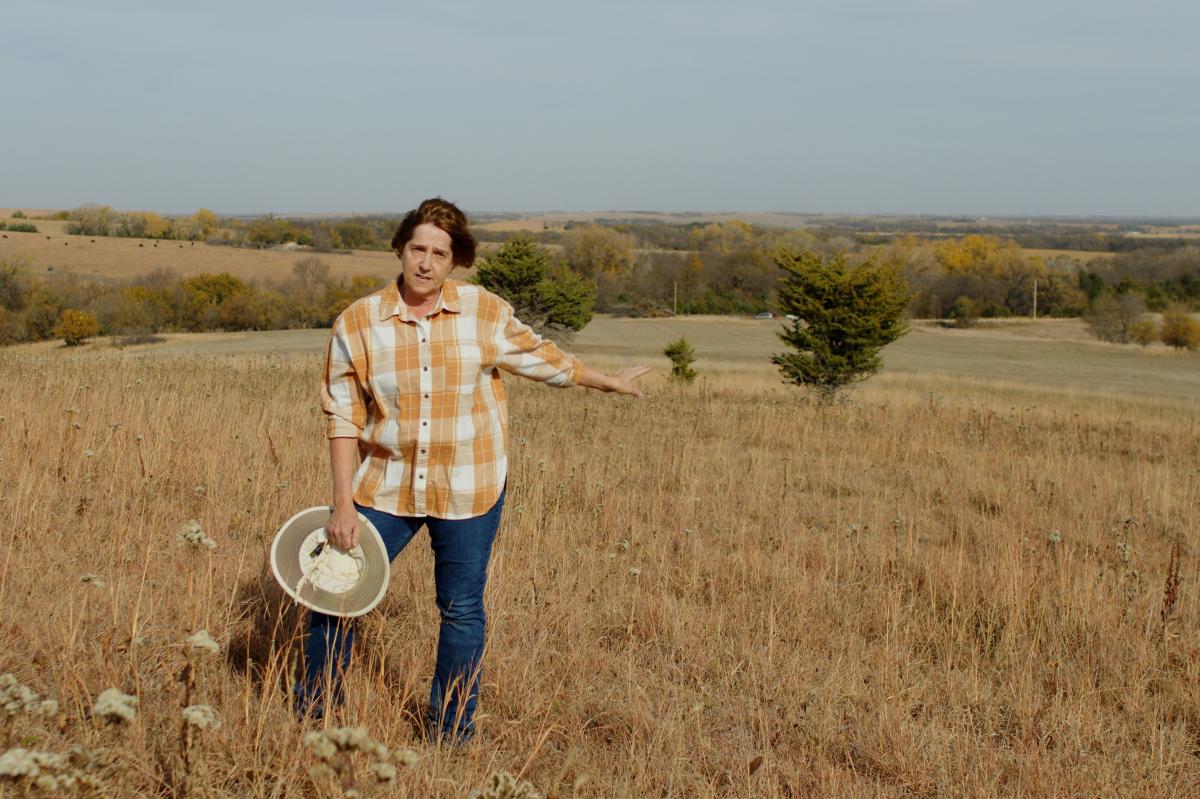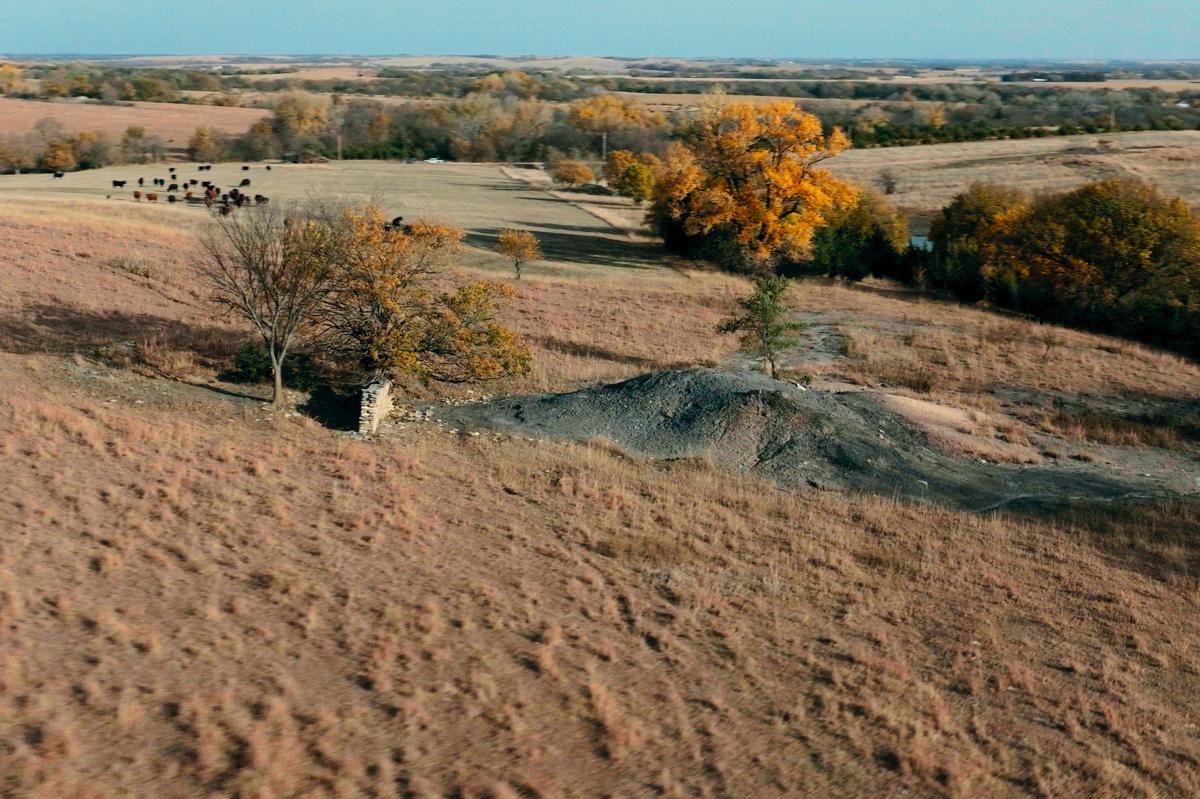Beneath Cloud County’s prairie landscape, a hidden coal reserve once supported a small community
Travelers on Kansas roadways may see abandoned limestone buildings and think of them as simply ruins of a bygone era. But their gaping windows and collapsed roofs harbor dynamic stories of brave settlers who carved their living out of barren prairie landscapes. One such story began in 1869 after a Kansan named Heim Nelson (or Nelsen, according to some historical accounts) discovered a coal vein running just beneath the surface of the prairie in northern Kansas.
A unique community, later known as Minersville, began to evolve in Cloud County where the coal was found. Although southeast Kansas produced a third of the nation’s coal more than a century ago, it was unusual to discover coal in the northern part of the state. By 1871, Minersville had established four total shaft and slope coal mines. Mine shafts were 6 to 8 feet in diameter and ranged from 20 to 80 feet deep. To enter the mines, men lay flat on boards suspended by ropes and pulleys. These contraptions were raised and lowered by draft horses. Miners would use picks to extract veins of coal from between layers of stone.

The coal discovered in Minersville was lignite coal, one of the lower grades of coal. Formed from compressed peat, it is soft and brown, and its low concentration of carbon (25–40%) and high water content make it less efficient than other types of coal. In comparison, anthracite is considered the highest grade of coal. It is hard and black, with a higher concentration of carbon (80–90%). To further compare, bituminous coal, typically found in southeastern Kansas, is a common middle-grade coal that is darker and shinier than lignite.
With limited wood and fuel resources available on the prairie, settlers in Cloud and Republic Counties cooked meals and heated their homes with lignite coal. They could purchase coal directly from the mines for $4 per ton or from local businesses in smaller amounts. Mines would also deliver coal to homesteaders for $7 per ton.
Mine owners employed two to six men per mine and paid them an average of $2 per day. Coal was mined six months per year. Local homesteaders often provided lodging to transient miners. In 1885, mine inspectors reported that 102,948 bushels of coal were extracted from six local mines. The Minersville coal seam was reported to be 20 inches thick.
“The miners woke up six days a week and crawled down into a 6- to 8-foot-wide hole to dig out coal for $1.50 to $2 per ton,” says avocational archaeologist Debi Aaron, describing the fortitude of mineworkers.
Booming Business
The community of Minersville began to see a boost in their labor economy. Citizens came together to establish a general store, post office, school, cemetery, and even a baseball team. Faith played an important role in the Kansas prairie mines, too. A Methodist church was established, and a family belonging to the Church of Jesus Christ of Latter-day Saints practiced those beliefs in the mining community.

As mining operations increased, mine inspectors traveled from Topeka to monitor safety, ventilation, escape shafts and humane conditions. A building was constructed to house the Knights of Labor, an American labor union active in the late 19th century.
Local historian Dr. Ed Glenn points out that, in addition to fuel for heating and cooling, lignite coal enabled local blacksmiths to produce goods necessary for business and agriculture. Surrounding towns such as Concordia also benefited from local access to fuel and the booming coal economy.
As with any economic development, the citizens of Minersville also experienced some adverse effects of a booming economy. Newspaper accounts document crimes such as horse theft and a counterfeit money ring. Stolen merchandise was found hidden inside the mines, and gangs of men in white hoods reportedly rode through the area. Although accidents surely occurred in the mines, records show only one confirmed fatality: a 10-by-20-foot slab of unstable stone crushed a miner in 1891.
A Sudden Bust
As the rail lines stretched further west, shipments of higher-quality anthracite coal began arriving from Pennsylvania. This coal burned hotter and more efficiently. When the demand for lignite coal declined, the local economy suffered. Lignite coal continued to be mined in Cloud County until the last mine shafts were sealed in the 1940s.
“The people of Cloud and Republic Counties owe a debt of gratitude to the brave, hardworking homesteaders who took advantage of an opportunity, built a community, and established an economic base for the area,” Dr. Glenn says.
Minersville is one of many early communities with rich stories of the brave men and women who left their homes and traveled west to build new lives on the Kansas prairie.




